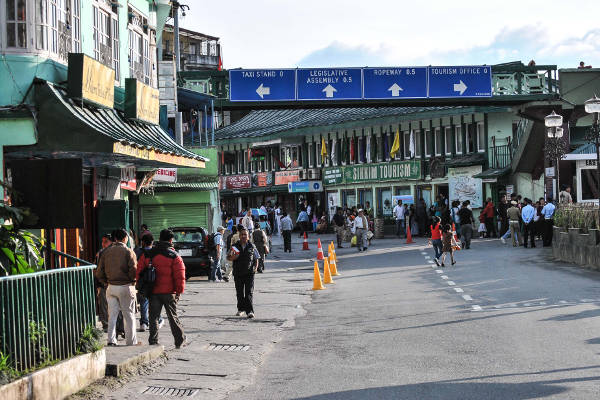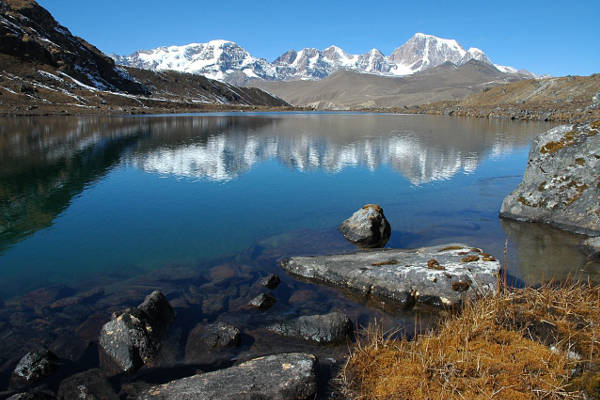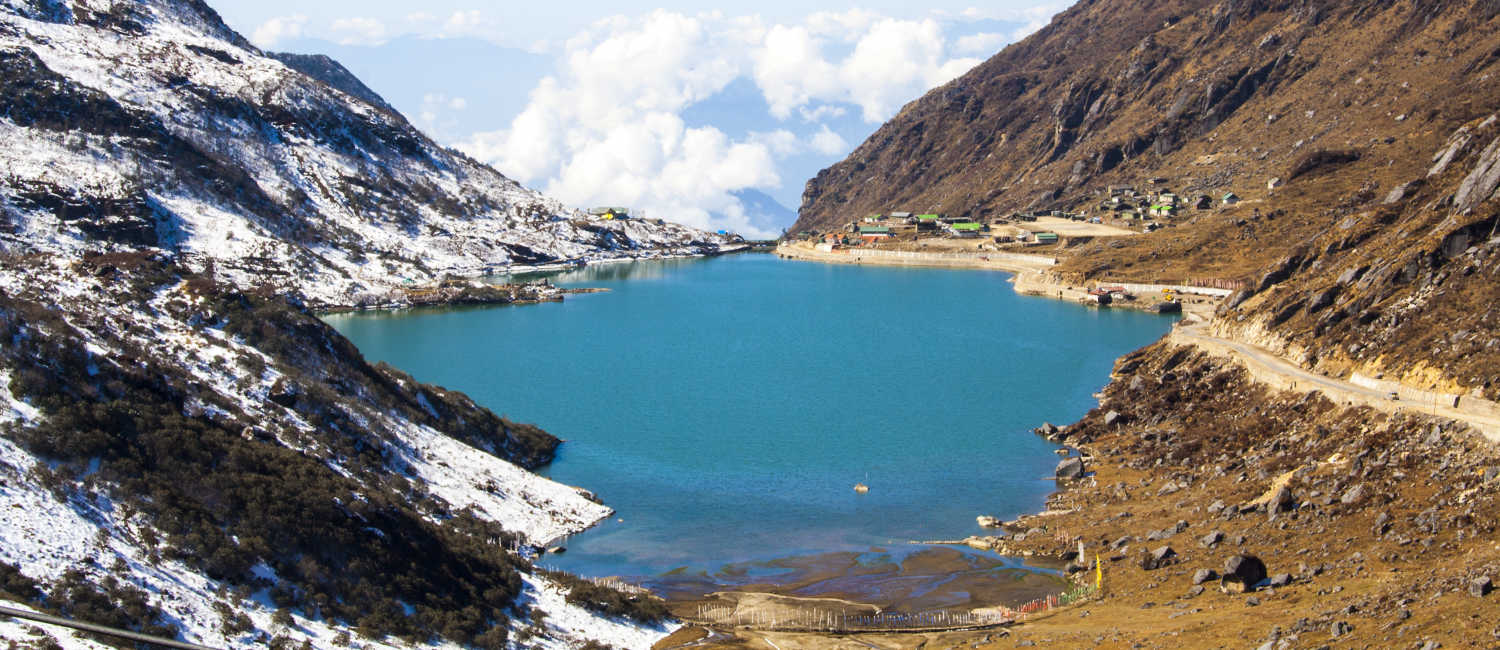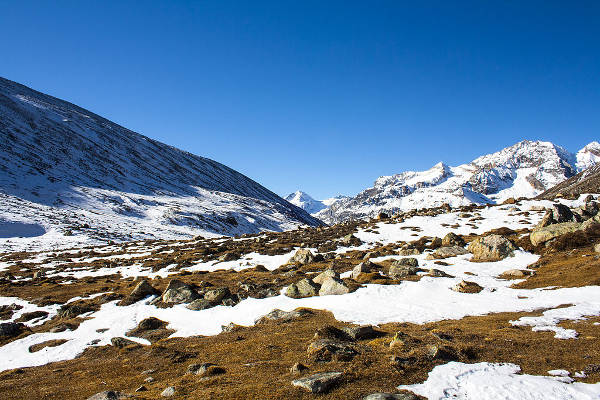Sikkim is a land-locked state of India. It is situated in the far Northeastern side of India - wedged in between Nepal and Bhutan to the West and East respectively, and China’s Tibet Autonomous Region to the North and West Bengal to the south.
Sikkim was the last Indian state to give up its monarchy and fully integrate into India in 1975. The population is the smallest of all the states in India, sitting at just over 600,000 people, with over half of the residents being of Nepali ethnic origin.
On this page, we have provided answers to frequently asked questions about hiking in Sikkim. You will also find links to detailed route guides for popular trails.
Trekking In Sikkim
Sikkim’s geographic position in the heart of the Eastern Himalayas makes it an incredible trekking destination. The third highest mountain in the world, Kachenjunga (8,586m), shares a border with Sikkim, and over 25% of the State’s area consists of national park.
But it is not only the incredible landscapes that make Sikkim an awesome destination to visit, the state also boasts amazing cultural diversity – over 11 languages – and rich biodiversity.
For treks in Ladakh, check out our guide to trekking in Ladakh, or return to our overview guide to hiking in India.

Treks in Sikkim FAQ
How do you get to Sikkim?
Gangtok is the largest town and official capital of Sikkim state. However, owing to the really mountainous terrain there are no airports or railway stations in Gangtok, or indeed in Sikkim itself.
For most tourists, the easiest way to get to Sikkim is to fly to Bagdogra in North Bengal and then get a taxi transfer for the next 124 km (about 4-hour drive) to Gangtok.
The following airlines service Bagdogra from most major airports in India:
- Indian Airlines
- Jet Airways
- SpiceJet
- Go Air
It is also possible to fly direct to Bagdogra from Bangkok with Druk Air (twice weekly) from Bangkok. For those who can’t stand the idea of a 4-hour taxi ride, it is possible to take a helicopter from Bagdogra to Gangtok.
If you wish to travel by rail, then the nearest stations are Siliguri and New Jalpaiguri. Both have train services connecting them to Kolkata. Again, you will need to hire a taxi to take you the rest of the distance to Gangtok.
Finally, if you are willing to brave a state-owned bus, then there are services from Siliguri to Gangtok.

Do you need a permit for hiking in Sikkim?
Permits are required to visit Sikkim. The permit is called a Restricted Area Permit or Inner Line Permit, and usually gives tourists up to 15 days to travel in the region.
There is no online application process, so you have to get your permit before travelling. If you are travelling with a tour company, they will usually secure your permit.
For those travelling solo, you can get a permit at the following points:
- At the same time when you apply for an Indian visa at your embassy
- At the Sikkim travel desk in Darjeeling (inside the Old Bellevue Hotel)
- At the Sikkim Tourism Center in Siliguri located at the S.N.T. bus stand
- At large international airports (Delhi, Mumbai, Chennai, Kolkata), but it can be difficult to find the relevant authority to issue the permit

What are the best treks in Sikkim?
Trekking and mountaineering, along with river rafting and mountain biking, are the most popular tourist activities in Sikkim. In terms of treks there is literally something for everyone in Sikkim.
There are a number of short and easy treks in the southern and Eastern region of Sikkim, and increasingly more difficulty and longer treks that head northward.
For first time travellers to the region, we highly recommend the Singalila Ridge trek which provides amazing vistas of the Himalayas and awesome views of Kachenjunga.
The Goecha La trek and Dzongri trek are two other popular trekking routes located in Sikkim.
The Dzongri trek is a moderate trek that takes you through dense forests, beautiful meadows, and provides stunning views of the Himalayas, including Mount Kanchenjunga which can be seen from the Dzongri viewpoint.
The Goecha La trek is the most challenging trek in Sikkim. It is best undertaken with an experienced guide.

What is the best time to Trek in Sikkim?
The best time to trek in Sikkim is in the Spring (late March-May) or in the Autumn (late September through October). From November temperatures start getting cold and the Winter months of December through February are unpleasant. The monsoon season runs from June through to early September and is best avoided.
Unlike most countries, Sikkim has five seasons: winter, summer, spring, autumn, and the monsoon. The climate in Sikkim varies from sub-tropical in the south to tundra in the north. Not surprisingly, the southern parts of Sikkim are the most densely populated as they experience the most temperate weather. As one heads north the altitude gain increases considerably and the most northern regions with the highest peaks are frozen all year round.
Can you trek alone in Sikkim?
No, trekking alone in Sikkim is not allowed. It is mandatory to have a local guide and a permit from the Sikkim Tourism Department to trek in the region. The permit is issued to ensure the safety and security of trekkers, as well as to regulate the number of people trekking in the area to minimize the impact on the environment. The local guide is also necessary as they are familiar with the terrain, the weather conditions, and the cultural sensitivities of the area, and can provide assistance in case of any emergencies. It is always recommended to trek with a reputable and experienced trekking company to ensure a safe and enjoyable trekking experience.
Continue browsing
See more information on India. Or check out these other Indian Hiking articles:


Are there any good options for trekking in Sikkim in the month of April between 15th to 30th. I am from Canada and looking for trekking places in or around Sikkim for easy to moderate trekkers.
Thanks
Naren